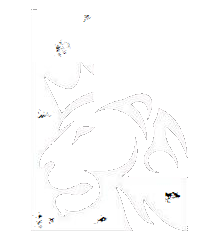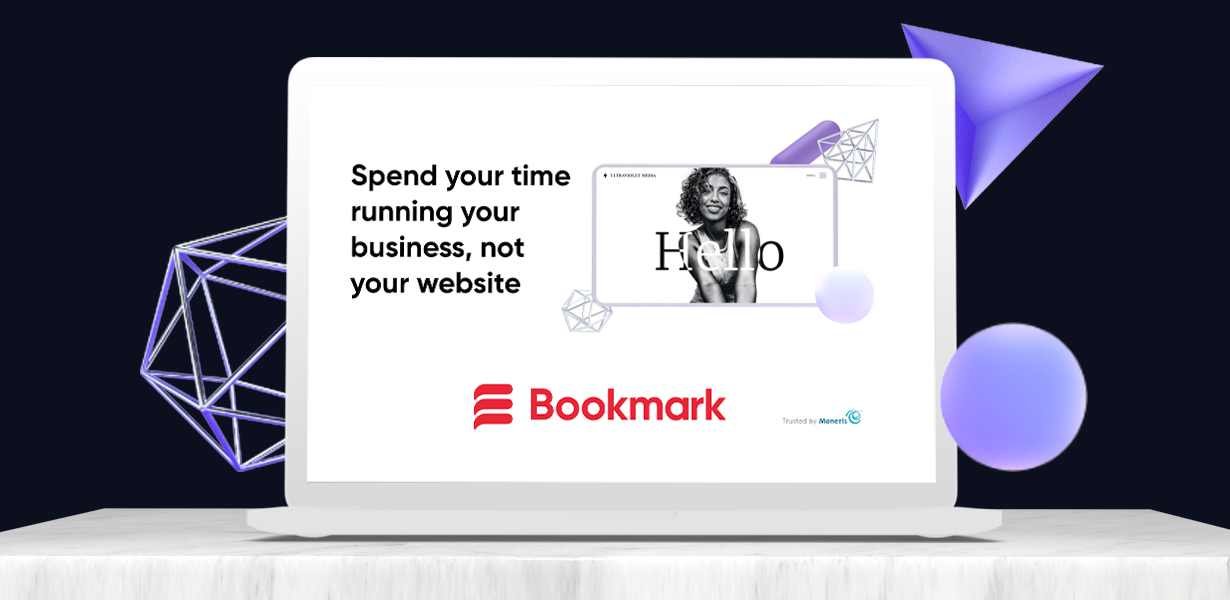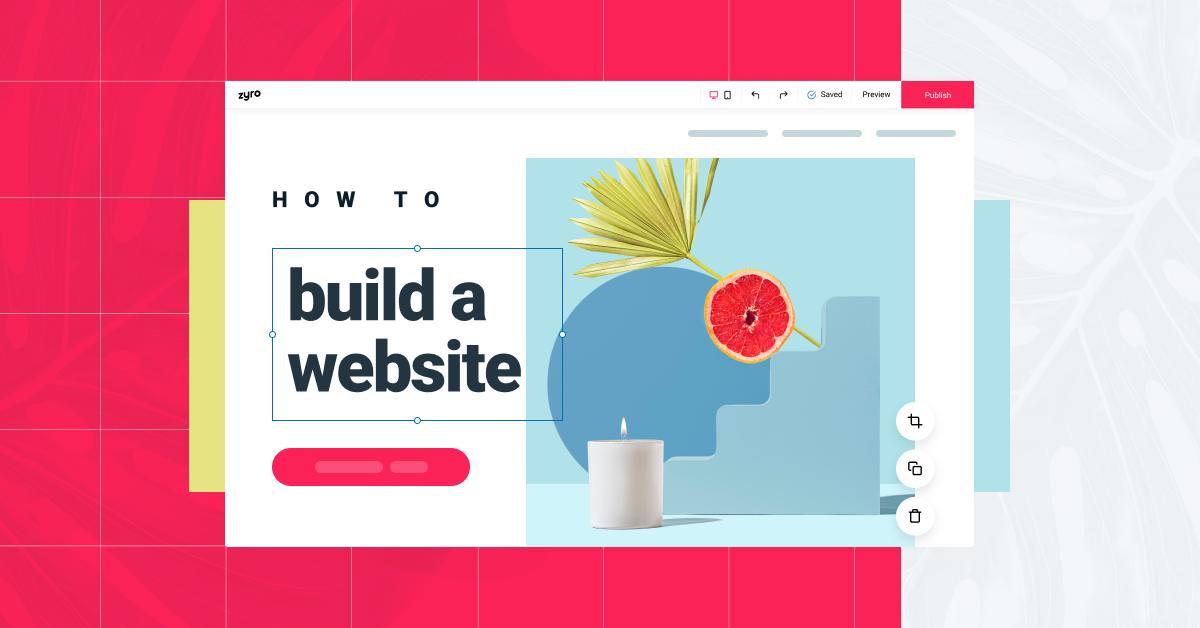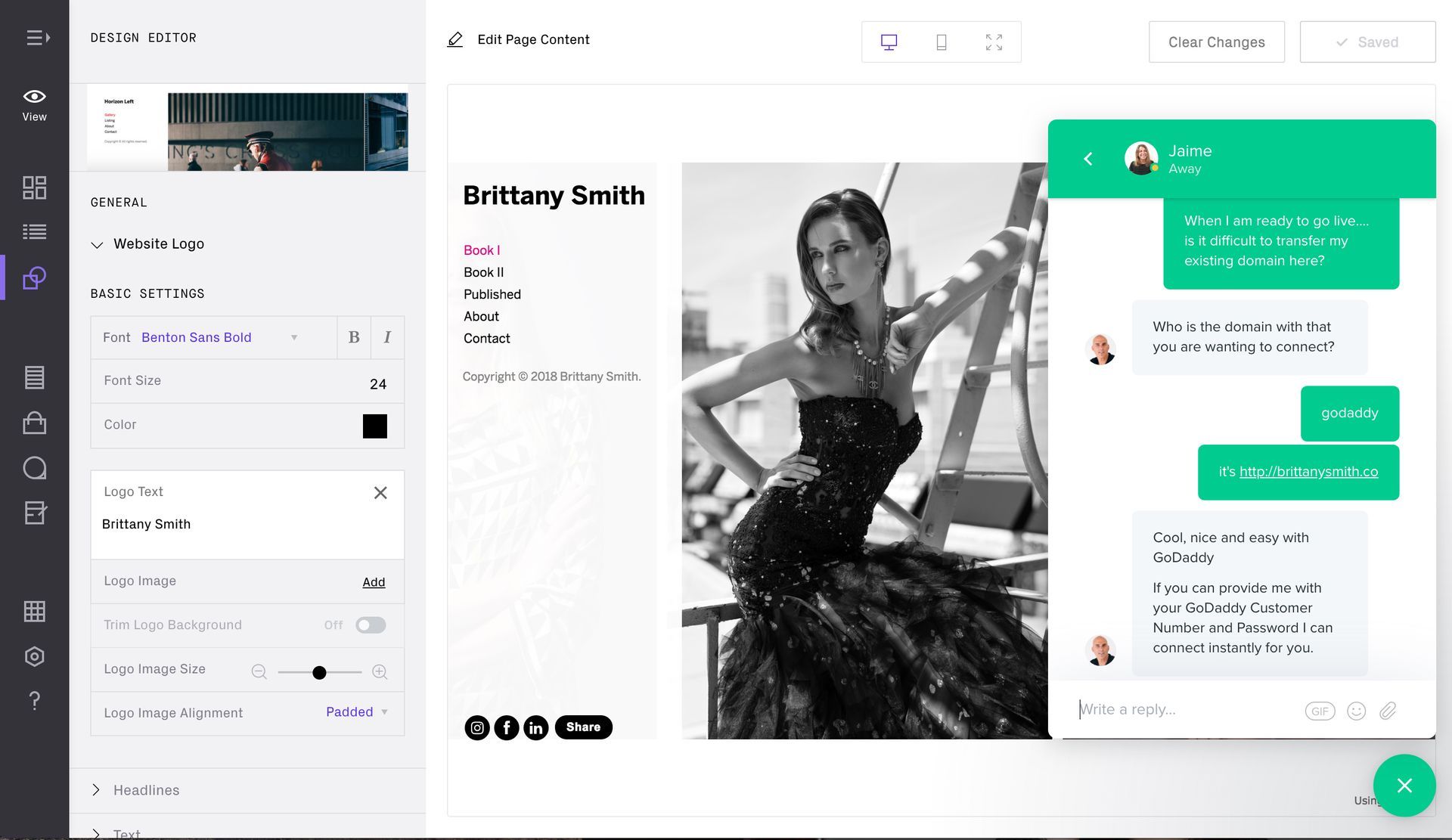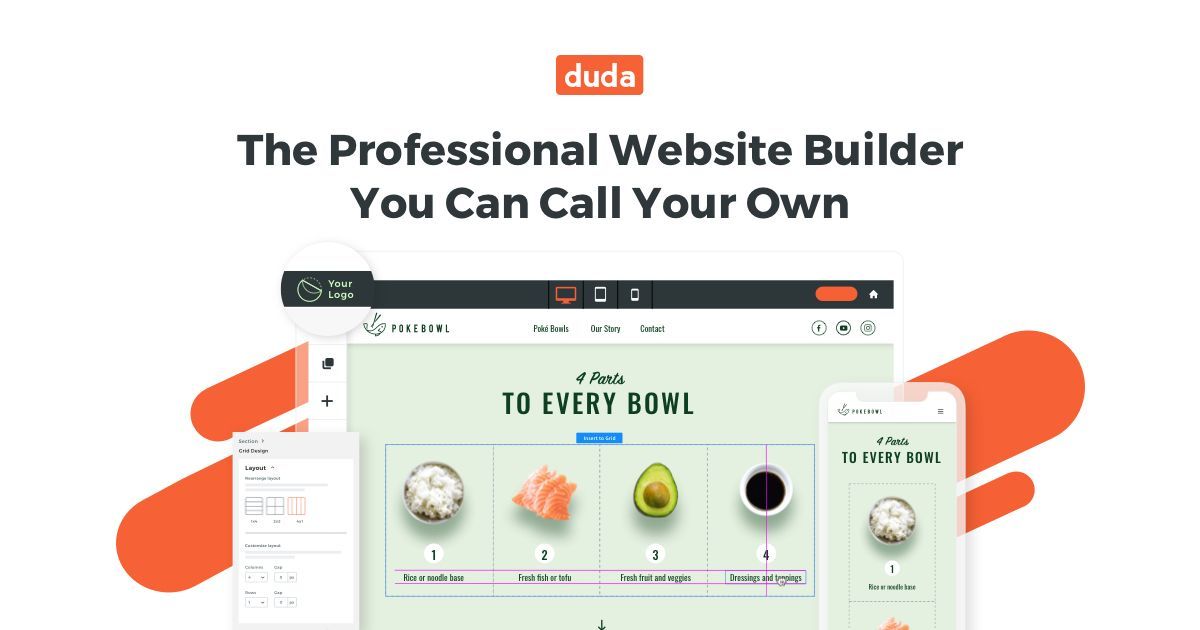Glossary
Web Design and Web Development Terms
Here, you'll find a glossary of some common and not so common web design or web development terms that will enhance your understanding.
301 Redirect: A permanent redirect from one URL to another, often used for SEO purposes when a page is moved or renamed.
404 Error: A standard HTTP response code indicating that the server couldn't find the requested page.
A
A B Testing: Comparing two versions (A and B) of a webpage or design to determine which performs better in terms of user engagement or conversions.
Above the Fold: The portion of a web page that is visible without scrolling, often considered prime real estate for important content.
Another JSON Validator (AJV): A JSON Schema validator for JavaScript, commonly used to validate data in API requests.
Application Programming Interface (API): A set of protocols and tools for building software applications, allowing them to communicate with each other.
Artificial Intelligence (AI): Artificial Intelligence (AI) refers to the simulation of human intelligence in machines that are programmed to think, learn, and perform tasks autonomously.
Asynchronous JavaScript and XML (AJAX): A technique that allows web pages to be updated asynchronously by exchanging small amounts of data with the server behind the scenes.
B
Back-end Development: The server-side of web development that involves building and maintaining databases, server applications, and handling server-side logic.
Back-end Framework: A pre-built set of tools and libraries for building the server-side of a web application. Examples include Django (Python), Ruby on Rails (Ruby), and Express.js (JavaScript).
Backlink: A link from one website to another. Backlinks are important for SEO, as they can improve a website's authority and search engine rankings.
Block Element Modifier (BEM): A naming convention for classes in HTML and CSS to create maintainable and scalable code.
Blog: A "blog," short for "weblog," is a type of website or online platform where an individual or a group of individuals, known as bloggers, regularly publish written content in a chronological format.
Bootstrap: A popular open-source front-end framework for designing responsive and mobile-first websites.
Bounce Rate: A metric that measures the percentage of website visitors who navigate away from a site after viewing only a single page, without interacting with any other content on the site.
Branch: A parallel version of a codebase within a Git repository, used for developing features or making changes without affecting the main code.
Breadcrumb Navigation: A navigational aid that shows the user's location on a website and helps them navigate back to previous pages.
C
Caching: The process of storing copies of files or data in a location that allows for quicker retrieval, improving website performance.
Call to Action (CTA): A prompt or button that encourages users to take a specific action, such as making a purchase or signing up for a newsletter.
Carousel: A rotating set of images or content displayed in a slideshow format on a webpage.
Cascading Style Sheets (CSS): A style sheet language used for describing the look and formatting of a document written in HTML. It controls the visual presentation of web pages.
CI/CD Pipeline: The continuous integration and continuous delivery pipeline automates the process of testing and deploying code changes.
Code Review: The process of systematically reviewing code to ensure its quality, adherence to coding standards, and identification of bugs or potential improvements.
Code Splitting: The technique of breaking down a large codebase into smaller, more manageable chunks that can be loaded on demand, improving website performance.
Containerization: A lightweight, portable, and efficient method of packaging, distributing, and running applications.
Content Delivery Network (CDN): A network of distributed servers that work together to deliver web content to users based on their geographic location.
Content Management System (CMS): A software application that allows users to create, manage, and modify digital content on a website.
Continuous Deployment (CD): An extension of continuous integration that automatically deploys code changes to a production environment after passing automated tests.
Continuous Integration (CI): A development practice that involves automatically testing and integrating code changes into a shared repository multiple times a day.
Conversion Rate: The percentage of website visitors who take a desired action, such as making a purchase or filling out a form.
Cookies:
Small pieces of data stored on a user's device by a web browser, often used to track and store information about user interactions.
Critical Rendering Path: The sequence of steps browsers take to convert HTML, CSS, and JavaScript into a rendered webpage.
Cross-browser Compatibility: Ensuring that a website functions and appears consistently across different web browsers (e.g., Chrome, Firefox, Safari, Internet Explorer).
Cross-Origin Resource Sharing (CORS): A security feature implemented by web browsers to control how web pages in one domain can request and interact with resources from another domain.
CRUD Operations:
Acronym for Create, Read, Update, and Delete – the basic operations performed on databases or resources in web development.
D
Dark Mode: A user interface option that uses a dark color scheme instead of the traditional light one, reducing eye strain in low-light conditions.
DevOps: A set of practices that combines software development (Dev) and IT operations (Ops) to improve collaboration and productivity throughout the development lifecycle.
Developer Tools (DevTools): A set of web development and debugging tools built into modern web browsers, allowing developers to inspect and manipulate the DOM, monitor network activity, and more.
Django: A high-level Python web framework that encourages rapid development and clean, pragmatic design.
Domain Authority (DA): A metric that predicts how well a website will rank on search engine results pages, developed by Moz.
Domain Name System (DNS): The system that translates human-readable domain names into IP addresses, allowing browsers to locate websites on the internet.
Domain Name: The unique name that identifies a website on the internet (e.g., www.example.com).
E
E-commerce: The buying and selling of goods and services over the internet, often through online stores.
F
Favicon: A small icon associated with a website, typically displayed in the browser's address bar or on browser tabs.
Flat Design: A design style that emphasizes simplicity, minimalism, and a two-dimensional appearance.
Focal Point: The primary point of emphasis in a design, guiding the viewer's attention to a specific area.
Framework: A pre-built set of tools, libraries, and conventions that provide a foundation for building web applications. Examples include React, Angular, and Vue.js.
Front-end Development: The process of building the visual and interactive components of a website that users interact with directly.
Front-end Framework: A pre-built set of tools and components for building the user interface of a website or web application. Examples include Bootstrap, Foundation, and Materialize.
G
Geotargeting: Delivering content to a user based on their geographic location, often used in advertising and personalized user experiences.
Git: A distributed version control system used for tracking changes in source code during software development.
Gitflow: A branching model for Git that defines a strict branching structure and release management.
Golden Ratio: A mathematical ratio often used in design to create aesthetically pleasing proportions and compositions.
GraphQL: A query language and runtime for APIs that enables clients to request only the data they need.
Grid System: A layout system that uses rows and columns to structure content on a web page, providing consistency in design.
H
Hamburger Menu: A navigation icon featuring three horizontal lines, typically used to indicate a hidden menu on mobile devices.
Headless CMS: A content management system that provides a backend only, allowing developers to use their own frontend technologies.
Heatmap: A graphical representation of data where values in a matrix are represented as colors, often used to visualize user interactions on a website.
Hero Image: A large, attention-grabbing image or banner at the top of a webpage, often used to showcase key content.
Hex Code: A six-character code (e.g., #RRGGBB) used in web design to represent colors, where RR, GG, and BB are hexadecimal values for red, green, and blue, respectively.
Hosting: The service that allows individuals and organizations to make their website accessible on the internet.
Hypertext Markup Language (HTML): The standard markup language used to create and design web pages. It structures content on the web.
Hypertext Transfer Protocol Secure (HTTPS): The secure version of HTTP, encrypting data exchanged between the user's browser and the website.
J
JAMstack: A modern web development architecture based on client-side JavaScript, reusable APIs, and pre-built Markup, promoting performance, security, and scalability.
JavaScript: A programming language that enables interactive web pages. It can be used to create dynamic content, validate forms, and interact with users.
JIRA: A popular project management and issue tracking tool used in software development.
JSON Web Token (JWT): A compact, URL-safe means of representing claims to be transferred between two parties. It's often used for authentication and information exchange.
L
LAMP Stack: Acronym for Linux, Apache, MySQL, and PHP/Python/Perl – a popular open-source web application stack.
Landing Page: A standalone web page created for a specific marketing campaign, often designed to encourage a particular action or conversion.
Lazy Loading: A technique that defers the loading of non-essential resources until they are needed, improving webpage performance.
Lighthouse: An open-source, automated tool for improving the quality of web pages. It audits web pages for performance, accessibility, SEO, and more.
Linting: The process of running a program to analyze code for potential errors, bugs, or stylistic issues.
Local SEO: Optimizing a website to rank well in local search results, often important for businesses targeting a specific geographic area.
M
Material Design: A design language developed by Google that uses grid-based layouts, responsive animations, and depth effects for a consistent and intuitive user experience.
MERN Stack: Acronym for MongoDB, Express.js, React, and Node.js – a popular JavaScript stack for building modern, full-stack web applications.
Meta Tags: HTML tags that provide metadata about a web page, including information such as the page's title, description, and keywords.
Microinteractions: Small, subtle animations or design elements that provide feedback or enhance user interactions.
Microservices Architecture: An architectural style where a complex application is broken down into smaller, independently deployable services that communicate through APIs.
Modal Window: A temporary window that appears on top of a web page, often used to display additional content or prompt user interaction.
Mood Board: A collection of images, colors, and textures assembled to convey a visual concept or theme for a design project.
n
Nginx: A popular open-source web server and reverse proxy server.
Nuxt.js: A framework for building Vue.js applications with server-side rendering, routing, and other features.
p
Parallax Scrolling: A technique where background images move at a different speed than the foreground, creating a sense of depth and immersion.
Pixel: The smallest unit of display on a computer screen. In web design, it refers to the tiny dots that make up images and contribute to screen resolution.
Platform as a Service (PaaS): A cloud computing service that provides a platform allowing customers to develop, run, and manage applications without dealing with the complexity of building and maintaining infrastructure.
Progressive Enhancement: A strategy in web design that emphasizes building a basic version of a website that works for all users and then enhancing it with more features for users with modern browsers and devices.
Progressive Web App (PWA): A type of application software delivered through the web, built using common web technologies but providing a similar experience to native apps.
Prototype: A functional model of a website or application used for testing and evaluation before the final product is developed.
Puppeteer: A Node.js library that provides a high-level API to control headless browsers (like Chromium) or full browsers over the DevTools Protocol.
Push Notifications: Messages that are sent from a server to a user's device, even when the user is not actively using the application or website.
r
Repository (Repo): A location where files and version history are stored, often associated with version control systems like Git.
Responsive Design: Designing a website to ensure optimal viewing and interaction across a range of devices and screen sizes, from desktop computers to mobile devices.
Responsive Images: Images on a website that adapt to different screen sizes and resolutions, improving performance and user experience.
Responsive Typography: Adapting the size and style of text to different screen sizes, ensuring readability and a good user experience.
s
Scalability: The ability of a website or application to handle increased load or traffic without a significant decrease in performance.
Schema Markup: A form of structured data added to a webpage's HTML to provide search engines with more information about the content.
Search Engine Optimization (SEO): The practice of optimizing web content to improve its visibility and ranking on search engine results pages.
Search Engine Results Page (SERP): It refers to the page that a search engine, such as Google, displays in response to a user's search query.
Semantic HTML: Using HTML tags in a way that conveys the structure and meaning of content, enhancing accessibility and SEO.
Semantic Web: An extension of the World Wide Web that aims to make data more interconnected and machine-readable by using standards like RDF (Resource Description Framework) and OWL (Web Ontology Language).
Single Page Application (SPA): A web application or website that interacts with the user by dynamically rewriting the current page rather than loading entire new pages from the server.
Sitemap: A hierarchical list or diagram that provides a visual representation of the structure of a website.
Secure Socket Layer Certificate (SSL): A digital certificate that authenticates the identity of a website and encrypts information sent to the server, ensuring a secure connection.
Static Site Generator (SSG): A tool that generates static HTML files from dynamic content, often used for building fast and scalable websites.
Sticky Navigation: A navigation menu that remains fixed in place as the user scrolls down the webpage.
Scalable Vector Graphics (SVG): An XML-based vector image format for describing two-dimensional graphics, widely used for logos, icons, and illustrations on the web.
Syntactically Awesome Stylesheets (Sass): A CSS preprocessor scripting language that is interpreted or compiled into CSS, providing features like variables and nesting.
t
TypeScript: A superset of JavaScript that adds static typing to the language, making it more robust and maintainable.
Typography: The style, arrangement, and appearance of text, including font selection, size, and spacing.
u
UI Kit: A set of pre-designed UI elements, components, and styles that can be reused to create consistent and visually appealing user interfaces.
User-Centered Design (UCD): User-Centered Design (UCD) is an iterative design process that prioritizes the needs and preferences of end users throughout the development of a product or system.
UI UX Design: The process of designing the user interface and overall user experience of a website or application.
User Journey Mapping: User Journey Mapping is a visual representation or diagram that illustrates the steps and experiences a user goes through while interacting with a product, service, or system.
User Persona: A fictional representation of a target audience segment, based on research and data, used to guide design and marketing decisions.
v
Version Control: The management of changes to source code over time, often using systems like Git.
Viewport: The visible area of a web page within the browser window. It can be affected by factors such as screen size and zoom level.
W
Web 3.0: Often referred to as the "Semantic Web" or "Decentralized Web," it represents the next generation of the World Wide Web, emphasizing machine learning, artificial intelligence, and decentralized technologies.
Web Accessibility (WCAG): The practice of designing websites and applications to be usable by people with disabilities, following the Web Content Accessibility Guidelines.
Web Analytics: The measurement, collection, analysis, and reporting of web data for the purpose of understanding and optimizing web usage.
Web Server: Software or hardware that serves content to users over the internet. Popular web servers include Apache, Nginx, and Microsoft IIS.
WebAssembly (Wasm): A binary instruction format that enables high-performance execution of code on web browsers, providing near-native speed.
Webhooks: HTTP callbacks that enable one system to notify another system about events, typically used for real-time updates.
WebP: An image format developed by Google that offers both lossy and lossless compression for images on the web.
Web Real-Time Communication (WebRTC): A free, open-source project that provides web browsers and mobile applications with real-time communication via simple application programming interfaces (APIs).
White Space: The empty space between elements on a webpage. Proper use of white space can enhance readability and aesthetics.
Wireframe: A low-fidelity visual representation of the skeletal structure of a website or application. It outlines the basic layout and placement of elements.
